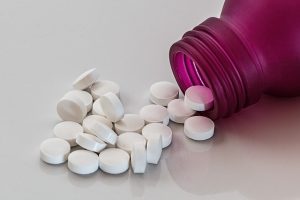 Self-treatment with amino acids is incredibly common; we receive emails and/or calls every week from people that are ‘trying’ amino acid therapy on their own, but not getting the results that they want/need. In addition to these instances, I’m going to suggest that the definition of self-treatment be expanded to include anyone that actively or passively does not follow their health care professionals recommended supplement protocol – either by “experimenting” with doses other than those recommended or by using “similar” products to those recommended. This approach rarely works, and the reasons are pretty straightforward.
Self-treatment with amino acids is incredibly common; we receive emails and/or calls every week from people that are ‘trying’ amino acid therapy on their own, but not getting the results that they want/need. In addition to these instances, I’m going to suggest that the definition of self-treatment be expanded to include anyone that actively or passively does not follow their health care professionals recommended supplement protocol – either by “experimenting” with doses other than those recommended or by using “similar” products to those recommended. This approach rarely works, and the reasons are pretty straightforward.
The Nutrients
The amino acid supplements that we recommend have been developed and fine-tuned for over 20 years. They are not simply generic nutrients thrown into a bottle; they are highly refined, low-variability nutrients. This distinction makes all the difference in the world.
The manufacture of nutrients occurs in large quantities known as “lots”. Variability is a term used to describe the acceptable difference (per the manufacturer) in the actual amount of the therapeutic material (or standardized extract) that is actually in the bottle and the amount stated on the label. For instance, if a product has a 10% variability in the amount of L-dopa from lot to lot, a product that states that it contains 100 mg of L-dopa may contain between 90 mg and 110 mg of L-dopa and still be within it’s variability limits. For a person taking these products for general health, that may be no big deal. However, for a person with a very specific dietary need for L-dopa – like someone using amino acid therapy for an imbalance related to neurotransmitter dysfunction – this can be disastrous (see the case study below).
Most supplement manufactures set a very high tolerable variability for their supplements, generally between 5-10% or more. A person using these types of nutrients during amino acid therapy will often experience dramatic swings in their symptoms with every new lot/product they purchase, which can lead to endless readjustments, often resulting in a person never reaching or maintaining optimal neurotransmitter function.
The Protocol
The protocols used to help each person achieve optimal neurotransmitter function have likewise been designed and refined over the past 15-20 years. Many of the adjustments that are necessary to achieve optimal neurotransmitter function are not intuitive. In fact, many of them absolutely require the use and guidance of specific testing to determine the proper dosing, even by those of us that have been using this therapy for many years. The probability that a person taking amino acid products and “experimenting” with dosages will find the correct dose is very small; the probability that they will cause further imbalance, however, is very high, which makes the probability of finding the optimal dose almost non-existent.
Case in Point
Here is a case study that illustrates the points above. Beverly had Parkinson’s disease that was not being managed well with medications, so she chose to try amino acid therapy. It took 27 weeks of weekly care to achieve optimal relief from her Parkinson’s symptoms using the recommended (low-variability) products. At that time, Beverly and her husband decided to buy generic nutrients on the internet in order to ‘save money’. They didn’t realize how much these (generic, lower cost, higher-variability) nutrients differed from the products they had been using. Immediately after starting the generic nutrients, Beverly’s symptoms began to deteriorate. Instead of contacting the caregiver that had optimized her neurotransmitter status and helped her mangage her PD symptoms, they continued self treatment.
By the time Beverly had taken these generic nutrients for six weeks, she was back in a wheelchair and no longer walking. The next week she was hospitalized. Her doctor in the hospital felt that her PD symptoms were too extreme and admitted her to a nursing home. Beverly never made it back home.
None of this had to happen.
Amino Acid Therapy May be Life-Long
There are two main types of imbalances that precipitate the need for amino acid therapy – (1) a relative nutritional deficiency and (2) neurotoxicity. A relative nutritional deficiency is a state where a person’s neurotransmitter stores are too low and must be replenished. Once this replenishment occurs (which can take between 6-12 months in most cases), it is often possible to dramatically reduce and even eliminate the need for amino acids over the long term. However, in cases of neurotoxicity, the damage that has occurred often means that amino acids will be needed for life in order to optimize neurotransmitter function and minimize associated symptoms. Neurotoxicity can occur due to a variety of reasons and can occur with almost any disorder, but is much more common with Parkinson’s disease, head trauma and/or after the use of amphetamines or other medications. In cases of neurotoxicity, amino acid therapy is a life-long therapy that must be employed using low-variability nutrients to maintain effectiveness.

